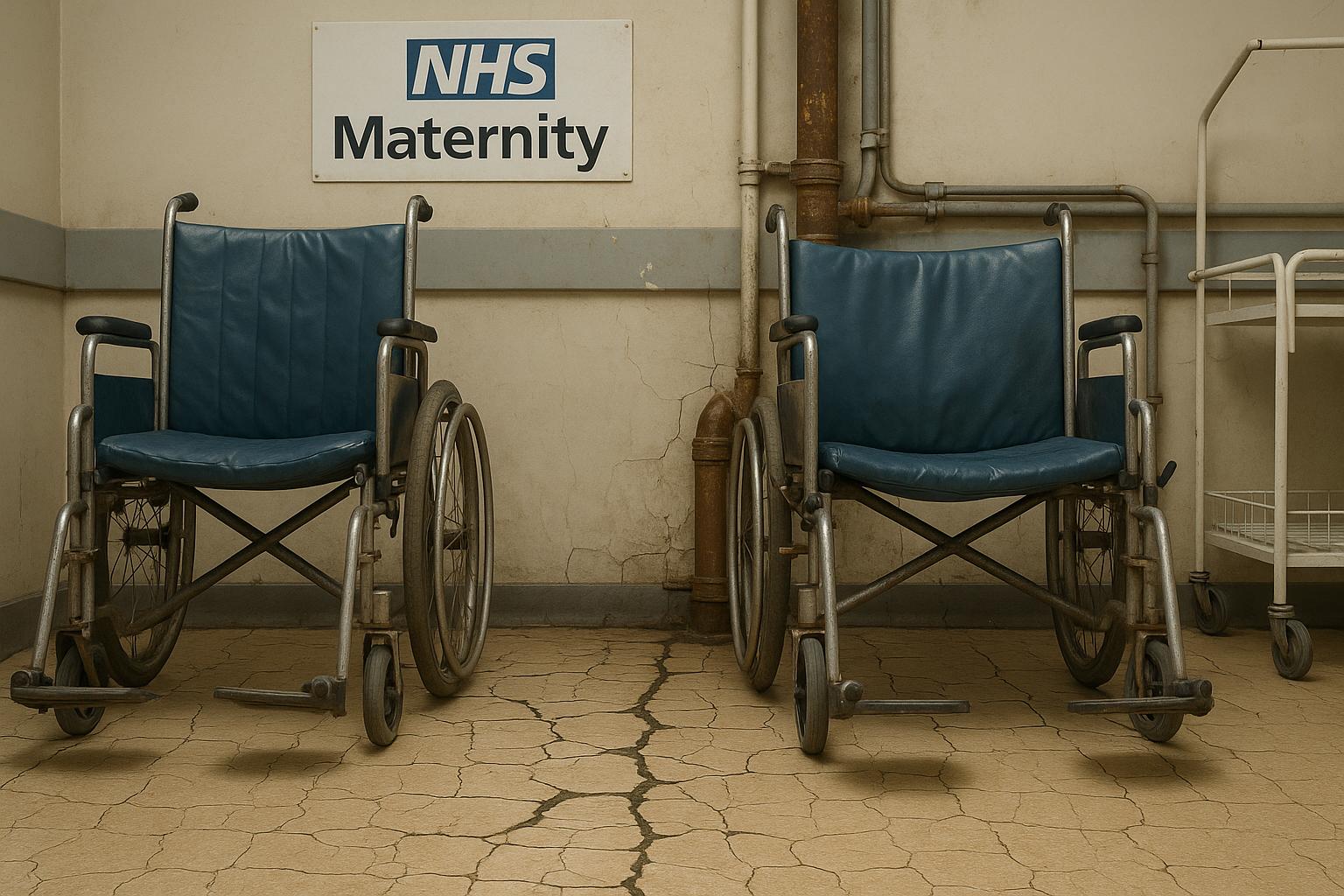Pregnant women in NHS maternity units across England are facing unsafe environments due to the deteriorating condition of hospital buildings, according to a recent report by NHS England. The findings reveal a deeply troubling picture: water leaks, power outages, and faulty equipment are causing widespread safety incidents and disruption of services, including delays to planned caesarean sections. The report recorded over 14,000 safety incidents linked directly to poor physical conditions in maternity units over the past three years, underlining a growing crisis in the infrastructure supporting NHS maternity care.
The report highlights that at least seven per cent of maternity buildings are at risk of imminent breakdown, classified in the worst-rated category D. Meanwhile, 42 per cent are rated category C, meaning significant repairs or replacement are needed within three years. London is the region most severely affected, followed by the South West and other parts of the country including the North East, Yorkshire, and Midlands. The unsafe conditions include outdated and frequently malfunctioning equipment, overcrowded wards, and wards insufficiently spacious to accommodate emergencies or proper care. The report also stresses the absence of adequate CCTV, poor ventilation, limited natural lighting, and a lack of private spaces within emergency departments for families experiencing pregnancy loss.
Water and sewage issues topped the list of disruptions, with 5,341 incidents related to water, sewerage, and drainage recorded between April 2020 and March 2023. Ventilation and heating problems accounted for nearly 3,000 incidents, while structural leaks and flooding contributed to further instability. This is echoed by investigative findings that hospitals have experienced more than 450 sewage leaks in the past year alone, with incidents reported on maternity wards, cancer wards, and casualty departments. Such conditions not only threaten patient safety but also impair staff’s ability to provide essential care.
Additional concerns raised include overcrowded nurseries with insufficient spacing between cots, heightening infection risks, and inadequate rest facilities for staff, including the lack of overnight rest spaces for consultants. Rising demand has also led to a shortage of post-natal beds, exacerbating challenges within already strained services.
These alarming findings align with a broader assessment by the Care Quality Commission (CQC), which found that nearly half of maternity units inspected require improvement or are inadequate, citing consistent issues such as poor incident reporting and delays that prompt some women to leave care prematurely. The CQC has urged urgent action to prevent such substandard care and the normalisation of avoidable harm in maternity services. This call to action resonates with NHS England’s commitment to allocate funding to trusts to address the most critical risks, compelling NHS leaders to ensure their facilities meet safe standards.
The infrastructural decline is part of a wider problem facing NHS hospitals in England, where maintenance backlogs have soared to £13.8 billion, driven by persistent problems with leaking roofs, broken equipment, and failing heating systems. These failures translate into considerable clinical downtime, with more than 600 days of deprived clinical service lost due to urgent repair needs. The scale of the crisis has forced many NHS trusts to close wards temporarily or permanently—impacting maternity, A&E, and paediatric units alike—further straining patient care capacity and safety.
NHS England’s recent infrastructure review of maternity and neonatal services underscores the pressing need for significant investment to enhance the experiences of patients and staff, improve safety, and provide high-quality care. The data makes it clear that without urgent and sustained funding and action, the physical state of NHS maternity facilities will continue to pose serious risks to mothers, babies, and healthcare workers.
📌 Reference Map:
- Paragraph 1 – [1], [7]
- Paragraph 2 – [1]
- Paragraph 3 – [1], [6]
- Paragraph 4 – [1]
- Paragraph 5 – [2], [4]
- Paragraph 6 – [1], [3], [5]
- Paragraph 7 – [7]
Source: Noah Wire Services
